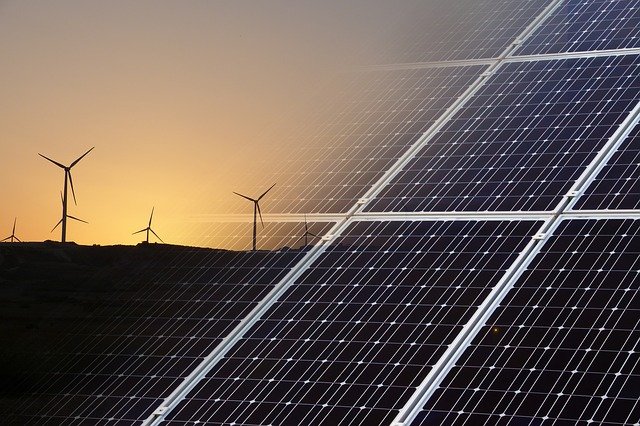

Author: Sid Ruttala
Before delving further, a disclaimer. We are by no stretch of the imagination experts on the actual technology required for the changes currently taking place. What we can do however is look at it through the lens of investors and to understand where the opportunities may arise and weed out the noise from reality.
A quick summary of the progress to date
The decade between 2011-2022 has been momentous for the renewables sector with annual net renewable additions to capacity (i.e. that is new capacity accounting for retiring older assets and accounting for depreciation) increasing from circa. 120 GW (gigawatts) to a record 280 GW in 2020, which saw a phenomenal 45% increase in capacity from the previous year despite Covid and the related headaches. 2022 looks set to continue building on these gains with current trends indicating that the sector (predominantly wind and solar) accounts for 90% of the increase in global capacity.
Off these overall numbers though, there are nevertheless some caveats. The growth over the last decade, despite the headlines that the EU and US continue to make, has primarily been a Chinese story with Vietnam being a surprise addition to the mix. China alone, for example, accounted for close to 80% of the increase in overall additions in CY2019 and CY2020; the longer term trend has averaged around 40% of global growth. Before proceeding further, it may be prudent to understand why this has been the case and what the incentives were that created said environment.
Utilities and the energy sector generally is a story of high capex and is intrinsically a regulated beast. Globally, much of the windfall for continued investments was created by the FIT or feed-in tariff mechanism, designed to offer compensation and help finance renewable energy investments. Typically this results in a difference in tariff awarded to wind power, for example, or PV sources as opposed to traditional fossil fuels. Its implementation may vary to a great degree however and can lead to substantial price differences seen by the end user. In the US it has primarily relied on legislation introduced during the Carter years, with the Public Utilities Regulatory Policies Act (or PURPA) and more recently through generous tax rebates. In the EU, led predominantly by Germany, the relevant legislation included mandated percentages of the energy mix by source. The difference in policy incentives (theoretically at least) would result in a slightly different burden in terms of cost. A mandate would inevitably lead to costs being passed on to the consumer in terms of higher utility bills while tax incentives and/or effective tariff differentials would see governments bear the burden.
With that in mind let’s return to China. The way in which this has been implemented, in classic CCP style, was a top down approach where the national target set by Beijing would effectively feed down to the provincial governments which then created different incentives in what was effectively a race to build capacity. This typically came in the form of direct subsidies/generous loan schemes. The national solar tariff was issued at about US$0.15 per kWh and various other policies created a conducive environment for the development of onshore wind power plants as well as helping struggling operators (through targeted subsidies). The tariffs for wind power, for example, were set at close to a 30% premium when compared to coal.
By this point, we hope that you are starting to get the point that policy environment and government intervention has a great degree of impact on the fortunes of the energy mix and, by extension, the returns of investors. So, why has China been an exceptional case? Here is were we bring in a few opinions. Firstly, we would argue that the question for China has not been about climate or its impact but rather the structure of the domestic economy. For one, think about the percentage of the PRC’s GDP that is made up of the industrial sector (including manufacturing), it currently stands at 30.8% compared to the US’s 10.8%. Think then about energy usage in said economy. Given industrial production, and manufacturing in particular, creates a greater need for stable supply, especially for the government in keeping unemployment low. A similar argument can be made for why Germany may have taken a greater initiative in the area in comparison to the rest of the Eurozone (i.e. manufacturing accounting for 17.82% of GDP, an outlier for a developed economy).
Moreover, China (along with much of Asia) stands as an outlier in terms of local sources of supply; their short term economic fortunes often decided not on government or domestic demand but rather on the price of global energy. In addition, this is a geopolitical issue for many countries, energy independence being a key issue around the world. Here, think of things like Russia’s influence over Europe’s supply. For China, it’s about the Malacca dilemma in reference to the Belt and Road Initiative, referring to the fact that 80% of PRC’s supply comes through the Straits of Malacca, making for some rather interesting implications on the national security front.
We see similar implications for India. Headway has been made in recent years starting under the previous Congress government in 2010 and catalysed by the Modi government who have pushed towards building out PV capacity in conjunction with the broader “make in India” policy. In fact, if it hadn’t been for the rather bi-polar response to Covid, India should have seen an additional 50% capacity added during the CY 2020-2021 period. Construction delays and grid-issues leading instead to a 50% decline over the period. We should however, assuming no further mishaps or outright bungling, see it hit all time highs soon enough.
This brings us to the next question. Does this imply that developed nations or services oriented economies don’t have an incentive? Especially given that we are likely to see a decline in Chinese growth over the coming years as government incentives are gradually phased out and the rollercoaster that has been recent energy markets settles with the onset of winter. Beijing has in fact ordered the re-opening of coal mines and created a medium term imperative to open up fossil fuels based solutions (which, unfortunately, remain vastly cheaper).
The question of incentives in developed nations – and future growth?
We would suggest that much of the slowdown in China will be mitigated and even overcome by greater demand in the developed world, led by the EU and US. However, the road will be much longer and rather messier because of an arguably more complex political environment characterised by periods of inertia (ah, the vagaries of democracy). Think for a moment about the much touted Green New Deal and the fact that it’s more ambitious aspects may need to be curtailed due to gridlock. Senator Manchin of West Virginia, a vital so-called Democratic moderate, has been the most vocal opponent (the fact that he made his fortune in coal may contribute) but any transition will firstly lead to higher costs (which can either be borne by government and indirectly by consumers or directly by them). The fact that key battleground states, including Biden’s own Pennsylvania, have a significant (and vocal!) portion of their employment in traditional fossil fuels based industries does not help, unless these industries have direct help with the transition period.
The case is similar in the EU which arguably has the most cohesive policy of the Western world. Given the recent spike in energy prices, led in no small part by continued grandstanding from Moscow, is a tell-tale sign that shorter term political considerations may put a dent on the more optimistic expectations. We have previously argued that it was a great failure of policy not to take these considerations into the calculus.
Nevertheless, we do see a longer term trend here. Perhaps not as immediate and with some uncertainty around growth prospects (which matters more for the investor who constantly looks at their securities). For one thing, it offers a great opportunity to create immediate employment and could also have the added benefit of bringing back some manufacturing.
Aside from this, we see the opportunity in these economies as perhaps having greater long term potential. The flipside of democratic governments is also the ability to have free enterprise which does have the added benefit of increasing commercial viability. Think for a moment about the Levelized Cost of Energy (LOCE) for solar and wind, which has fallen close to 90% and 70% respectively, and where the technology that enabled this has come about. Ultimately, as previously alluded to, the cost will determine the viability of these technologies. The biggest hurdles remain things like seasonality, weather and transmission congestion (the ability to circumvent gridlock during peak demand). These issues were rather unfortunately summed up by our own Minister Angus Taylor, who suggested that solar does not work during the night. What we hope he was getting at was the lack of commercially viable storage technology. I remain an optimist and hope that a cabinet minister (and one who looks after Energy) would have the intellectual capacity to see that.
The key to cracking the code on this will remain storage capacity. Lithium-ion batteries, while they continue to fall down the cost curve, remain (at least in the shorter term) ineffective in the deployment on a utility-level scale (too expensive). Under some estimates, we would have to see a reduction in about 80% with tech that can increase lifespan and decrease dissipation. Again, the problem remains peak demand. Without this, even increased capacity build out makes for a rather messy scenario with peak demand leading to overextension while per unit cost during off-peak continues to fall. An alternative through the transition may be a hybrid grid, where peak demand would be complemented by fossil-fuel generation. However, there is a little problem with this idea. Given that there would be very little appetite for the private sector to make the numbers work even in smaller markets, it would require government funding. The question may be what would happen in the advent of a technological breakthrough in storage given the pace of innovation currently taking place? That level of uncertainty and constant flux is also perhaps the reason why there is very little appetite for traditional generators, the potential risk of what are termed stranded assets.
So, the growth prospects are there but how do we benefit?
For those that read last week’s article, it may seem that we do not believe in renewables or the transition occurring. This is simply not the case. The previous contention was the lack of policy initiative to take dislocations and the adverse impacts into consideration. As an investor it pays to be aware of some of the nuances that are underlying the sector. For example, how does Senator Manchin in the US throwing a spanner in the works of the more ambitious proposals impact a renewables sector, and PV companies priced to perfection, impact your returns in the short run?
Similarly, how does direct policy intervention incentivised by political considerations impact a rare-earths manufacturer like Lynas? We’ve previously talked about their DoD funding to start manufacturing in Texas. Even for those that aren’t particularly interested in the space, how does a lack of capital investment in more traditional fossil fuels based approaches impact the price of those commodities which still remain vital to the economy not only in terms of growth but inflation? Assuming inflation and a more aggressive monetary policy stance, what might that do to my own portfolio with say an allocation to Alphabet or Microsoft (Hint: the discount rate changes and so does their valuation). However, we’ve also written about the broader supply chain in terms of Mineral Resources, Pilbara and broader commodities including copper?


